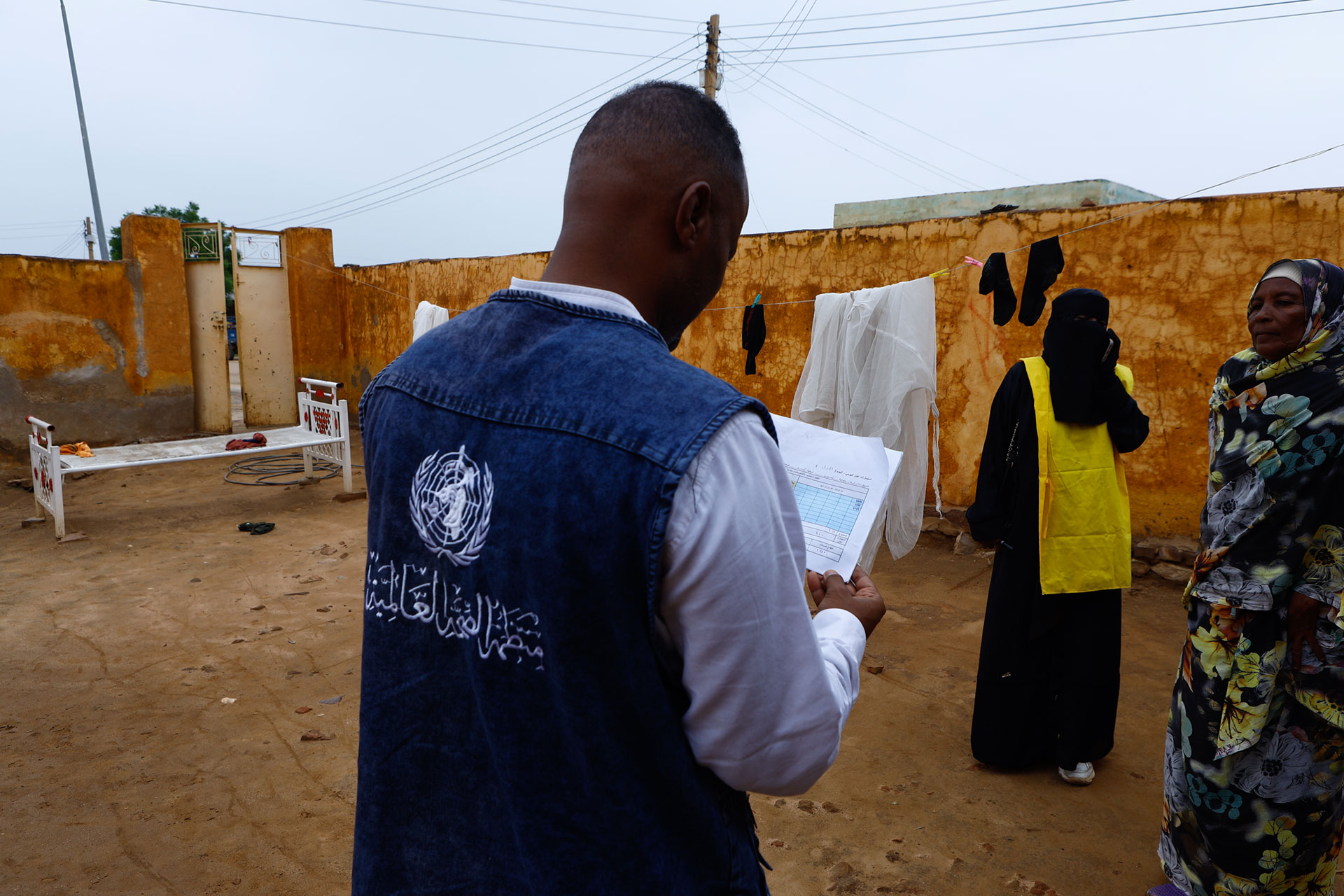
01 July 2025, Port Sudan, Sudan – Since the conflict in Sudan erupted in April 2023, the health system has come close to collapse, leaving millions without care. Health facilities have been devastated and many medical staff forced to leave. Yet amid all the destruction communities and health workers continue to work on the frontlines, providing what services they can.
From January to June 2025, the World Health Organization (WHO), in partnership with Sudan’s Federal Ministry of Health and the United Nations Development Programme (UNDP), reassessed Sudan’s progress towards Sustainable Development Goal 3 (SDG 3) targets. The reassessment was funded by the secretariat fund of the Global Action Plan on Healthy Lives and Well-being for All and conducted in liaison with the WHO Regional Office for the Eastern Mediterranean.
Data from the Health Resources Availability Monitoring System (HeRAMS) paint a sobering picture: 38% of health facilities are non-functional and only 14% of hospitals remain operational. In Khartoum, which once provided 70% of national health services, many hospitals have been destroyed or repurposed for military use.
The impact is profound. More than 4.9 million children under 5 suffer from acute malnutrition. Immunization coverage has collapsed from 90% to 51%, leaving millions of children vulnerable to vaccine-preventable diseases.
“The war has had a profoundly negative impact on child health services in Sudan, leading to increased mortality and morbidity among children,” said Dr Humayun Rizwan, Health Policy Advisor, Universal Health Coverage, WHO Sudan.
Over 1 million pregnant women need reproductive health services, yet many cannot access even the most basic care. Maternal mortality has risen by 30%, and skilled birth attendance has dropped from 85.9% to 77%.
Health workers continue to serve in makeshift clinics, often without pay or protection. Community volunteers and local NGOs have stepped in to deliver basic medicines, nutrition support and maternal care. In Kassala and Blue Nile states, pre-existing community health networks help sustain outreach and education efforts.
Projecting Sudan’s health trajectory through to 2036, the reassessment posits 3 scenarios – worsening, static and improving. In the absence of urgent action – the worsening scenario –mortality figures will continue to grow and the health system faces long-term collapse. But with stabilization, scaled up investments and sustained humanitarian access – the improving scenario – Sudan could recover some lost ground by 2030.
Four priority areas for action have been identified to reverse the decline: restoring primary health care; scaling up emergency response; promoting health and well-being (especially for women and children) and strengthening governance and data systems. The findings are already guiding Sudan’s Health Sector Rehabilitation Plan and helping inform donor strategies from key partners such as the European Union, the UK Foreign, Commonwealth and Development Office, the World Bank and the Global Fund.
The SDG 3 reassessment outlined a scenario in which health services stabilize, investments increase and progress towards universal health coverage resumes. WHO is working closely with the Federal Ministry of Health and partners to make this a reality – by strengthening health systems, expanding access to care and mobilizing coordinated international support to protect the lives and health of millions.
Collective efforts offer a pathway to recovery – and hope for a healthier future.



